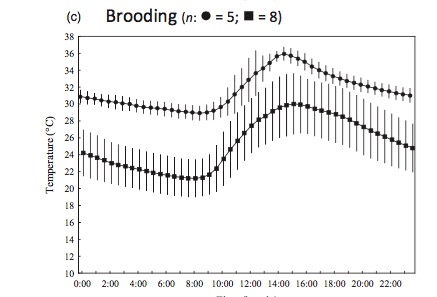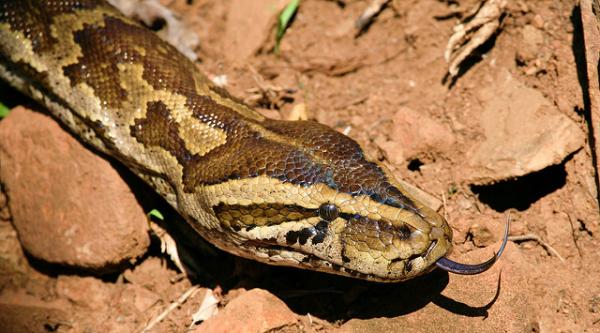Yes, snakes can be good mothers too, according to recent research published in the Journal of Zoology. The particular animal studied, the South African python (Python natalensis), lays eggs, and displays behaviors and attributes that seem directed toward her offsprings’ survival, both before and after hatching.
Information about these reptiles was gathered over a 7-year period by Dr. G.J. Alexander, Professor at the University of Witwatersrand, South Africa. In his field study, Dr. Alexander fitted female pythons with temperature-logging and tracking devices, and also had cameras recording the snakes’ behavior around their dens. In all, 37 pythons were tracked, resulting in over 2,000 observations.
Of the 8 female pythons Alexander observed, 7 used other animals’ burrows for their nest sites, and they laid their eggs from about 6.5 to 20 feet from the entrance.
These animals can’t maintain a constant body temperature, as do mammals and birds. Thus keeping their eggs and hatchlings warm is a major challenge. The female pythons cope in two ways. First, breeding females change color — from a mixture of mottled browns to almost uniformly black — which neither males nor non-breeding females do at the same time of year. Their darker skins mean more heat absorption from the sun and thus a significantly higher body temperature than non-breeders, as shown in the figure below [The circles represent the brooding females and the squares are non-breeding females; Source: G. J. Alexander. Reproductive biology and maternal care of neonates in southern African python (Python natalensis). Journal of Zoology, 2018; DOI: 10.1111/jzo.12554
 The investigator noted that these brooding females emerged from their burrows to bask in the sun (and thus raise body temperatures) twice per day. The rest of the time they remained coiled around the egg mass, and once the young hatched, coiled around them, presumably keeping them warm. By 2-3 days of age, the young pythons had begun to emerge from the den and bask on their own.
The investigator noted that these brooding females emerged from their burrows to bask in the sun (and thus raise body temperatures) twice per day. The rest of the time they remained coiled around the egg mass, and once the young hatched, coiled around them, presumably keeping them warm. By 2-3 days of age, the young pythons had begun to emerge from the den and bask on their own.
Breeding females do not leave their young to hunt or eat, and thus their body condition deteriorates over the breeding season.
“Mothers lost an average 38.3% body mass (range 34.8– 41.5%) and appeared to be in poor condition during and after the breeding event.” Dr. Alexander noted.
The mother remains by the nest for up to about 3 weeks after the young have hatched, thus continuing to provide warmth. Post hatching, the young are hampered by the presence of large amounts of yolk in their stomachs, and this would hamper their movements if they had to become independent earlier, Dr. Alexander suggested.
Thus these animals present interesting examples of adaptation to the environmental requirements they must meet in order to successfully rear their young. And again, our expectations of how animals adapt to survive various habitats must be revised.




